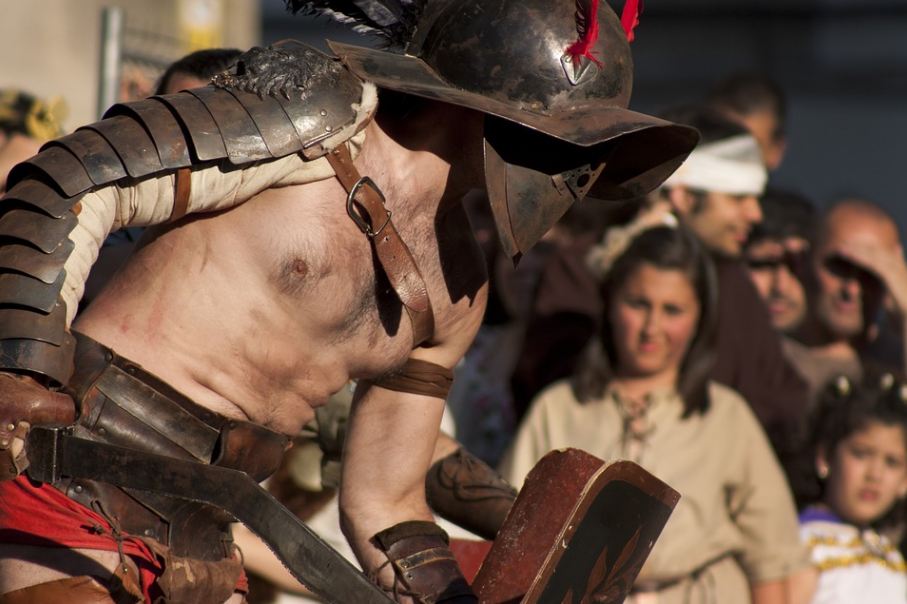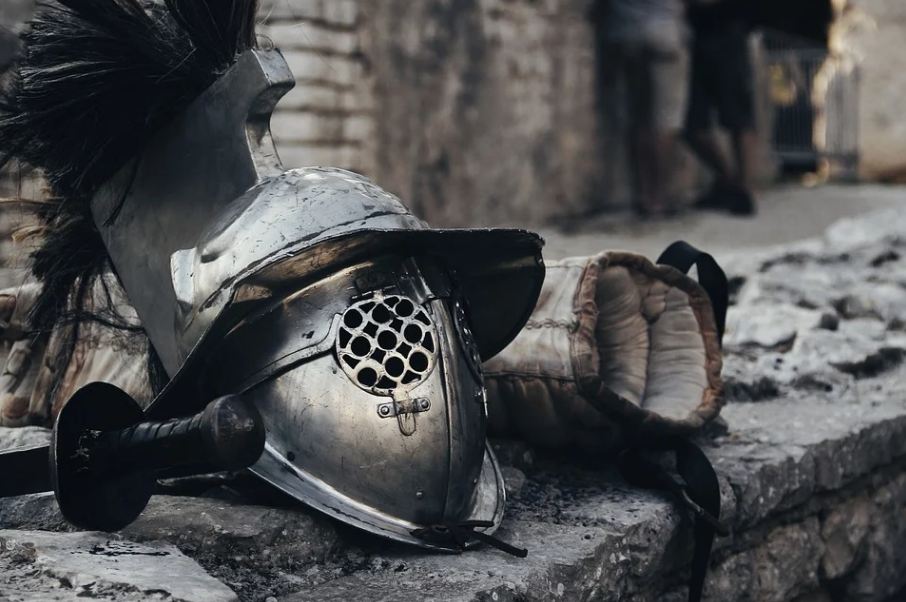Much like the best and most famous athletes in different sports today, the gladiators in Ancient Rome were considered superstars that are adored by the people, especially those who win more matches than the average fighter. These gladiators would often fight to the death, and their resilience and skill in becoming a victor of such a gruesome fight allow them to be crowd favorites, as they have accomplished a feat that couldn’t be done by many. However, despite the popularity of gladiators in Ancient Rome, most of them don’t have good living conditions, and almost all of these warriors are forced to enter the Colosseum and fight. To have a better understanding of these fighters’ living conditions, and to know how they are trained to fight, here is a guide on the life of a gladiator.
Who are Chosen as Gladiators?
During the early years of the gladiator matches, right after the Colosseum was built in 80 AD, the people chosen to be gladiators were prisoners of war and criminals who were forced to fight a punishment for fighting the Roman Empire or committing a heinous crime. To make the fights more exciting, these forced gladiators were trained in one of three major gladiator training schools in Ancient Rome. Capua, which is now considered a city in Southern Italy, is the region where the best gladiator training school is said to be located.
In the training schools, the life of the criminals or prisoners of war were much better compared to being locked up in prison cells, as they are often given three meals a day in order for them to be physically fit to fight in the Colosseum. The meals that these gladiators eat usually consist of cereals, eggs, vegetables, fish, and food that are typically only served to the elite like meat and cheese. Besides the meals, gladiators would also be given massages and good baths before and after a fight so that their bodies will remain in peak condition. But despite having these luxuries, these trained gladiators would still have shackles on their neck or arms, and they are only free to roam around the training school during training sessions and mealtimes.
As gladiator matches became more and more popular in Ancient Rome, free men or ordinary citizens began signing gladiator contracts in order for them to enter training schools and become a gladiator in the Colosseum. Although they voluntarily wanted to become a gladiator, the free men were not treated differently from the prisoners of war and the criminals inside the training school. Women are also forced or allowed to participate in gladiator fights, although they are fairly uncommon. However, Roman Emperor Septimius Severus banned women in gladiator fights in 200 AD.
Training as a Gladiator
Gladiators are trained in different environments and types of matches, but before they are taught how to fight in different scenarios, these fighters would first need to learn how to take care of their bodies. These body-focused training sessions include exercises that increase their muscle mass to be more durable, and also their stamina to last longer in fights.
After having a conditioned body, the trainees would then undergo weapon training. At first, they will be trained in using wooden swords and taught how to perform different fighting styles. After mastering wooden swords and other wooden weapons like shields and spears, the armor that the gladiators would use in battles will be determined by their physique. Heavy armor is for those with bigger muscle mass to further increase their durability, while lighter armor is for the gladiators that have a thinner physique to increase their mobility in battle. Once the armor for each trained gladiator is determined, the fighters would then be trained on how to maneuver properly while wearing their armor.
Gladiator Fights
Contrary to popular belief that gladiators fight every day, one gladiator would actually only fight three to five times a year, depending on his or her popularity. A day before the chosen gladiators fight in the Colosseum, they are given a special banquet filled with good food, as the meal that they are eating in that banquet could be their last. However, the “fight to the death” slogan often associated with gladiator fights isn’t usually followed, and many historians believed that only 20% of gladiators died from fighting.
Besides being killed, a gladiator has several options to declare defeat. The first option is by raising one finger if they feel like they are in a losing battle against his or her, while the other options include putting up a boring fight so that the arbiter (the judge of the battle) would declare a stalemate or putting up a good fight that the audience will enjoy so much that they want to stop the fight and hope to see the two gladiators fight in another match. If the first option declares the winner of the match, the arbiter would be the one to decide if the losing gladiator would be allowed to live. The arbiter could either be a person belonging to the elite or the emperor himself, and he can be the sole person responsible for the decision, or he can let the audience decide the fate of the losing gladiator.
The reason why not many gladiators are killed in battle is that the training schools and the arbiters consider the fighters to be investments, especially those who are crowd favorites since they attract people into going to the Colosseum and pay to see matches. In addition, historians believed that the training schools would teach their gladiators to not kill each other even while fighting as hard as they can in order to not lose investments.
If a gladiator is decided to be killed, his opponent will be the one that will kill him or her. Usually, the winning gladiator would pierce the body of the loser with his or her weapon, and after this fatal blow is performed, an attendant equipped with a mallet would then check if the losing gladiator is dead. If the gladiator is still alive, the attendant would then strike the body or the head of the gladiator until he or she is declared dead.
Gladiator fights were considered a violent and harsh punishment by slaves, criminals, and war prisoners despite the luxuries that they get while training to become Colosseum fighters. The money that they receive for each of the matches they win could typically be exchanged for their freedom, but for the free slaves, being a gladiator is only a job for them where they can earn enough money before retiring. While gladiator matches have been abolished since 404 AD, gladiator-like sports, such as boxing and MMA (mixed martial arts), are still quite popular today.



